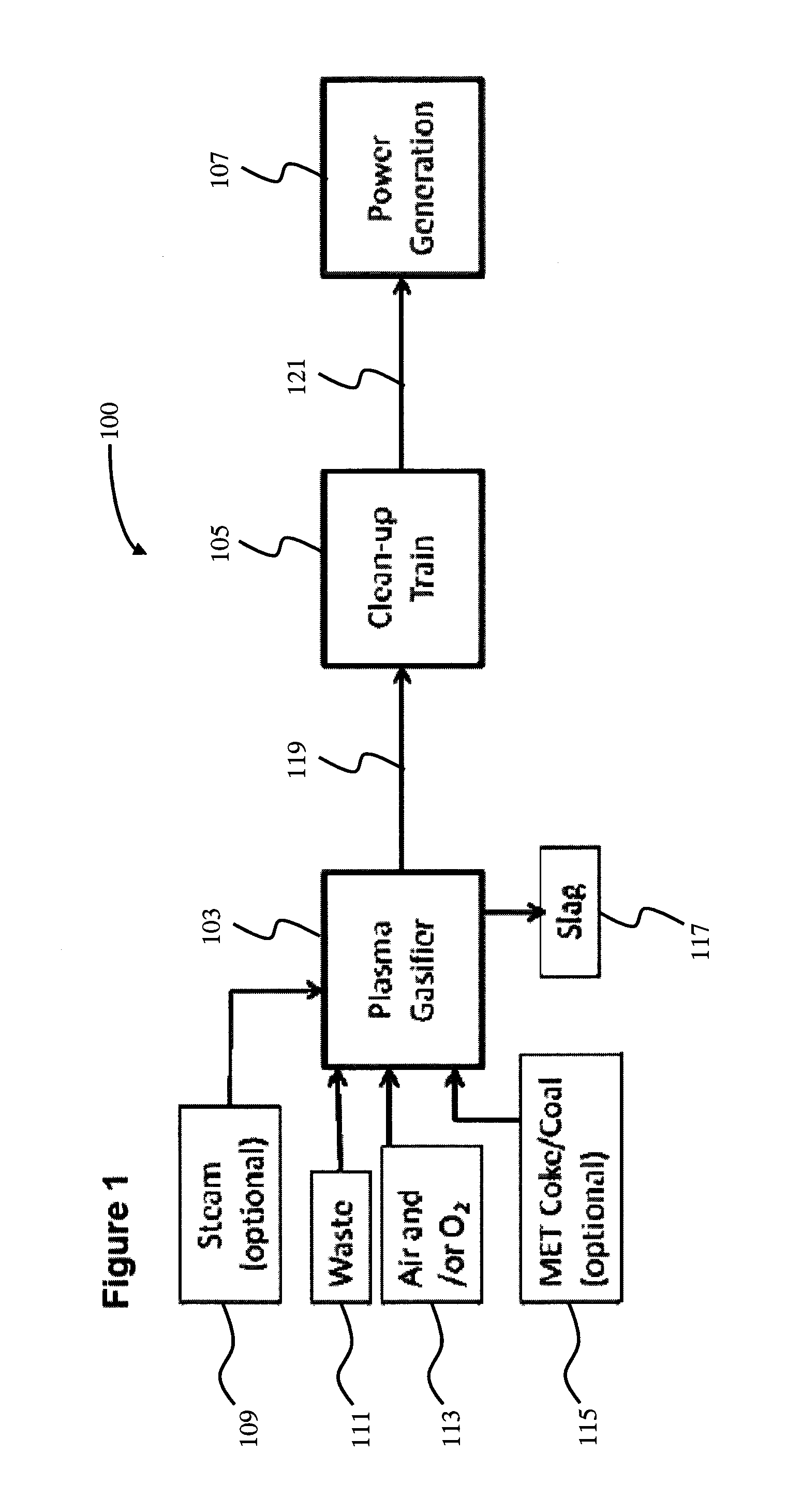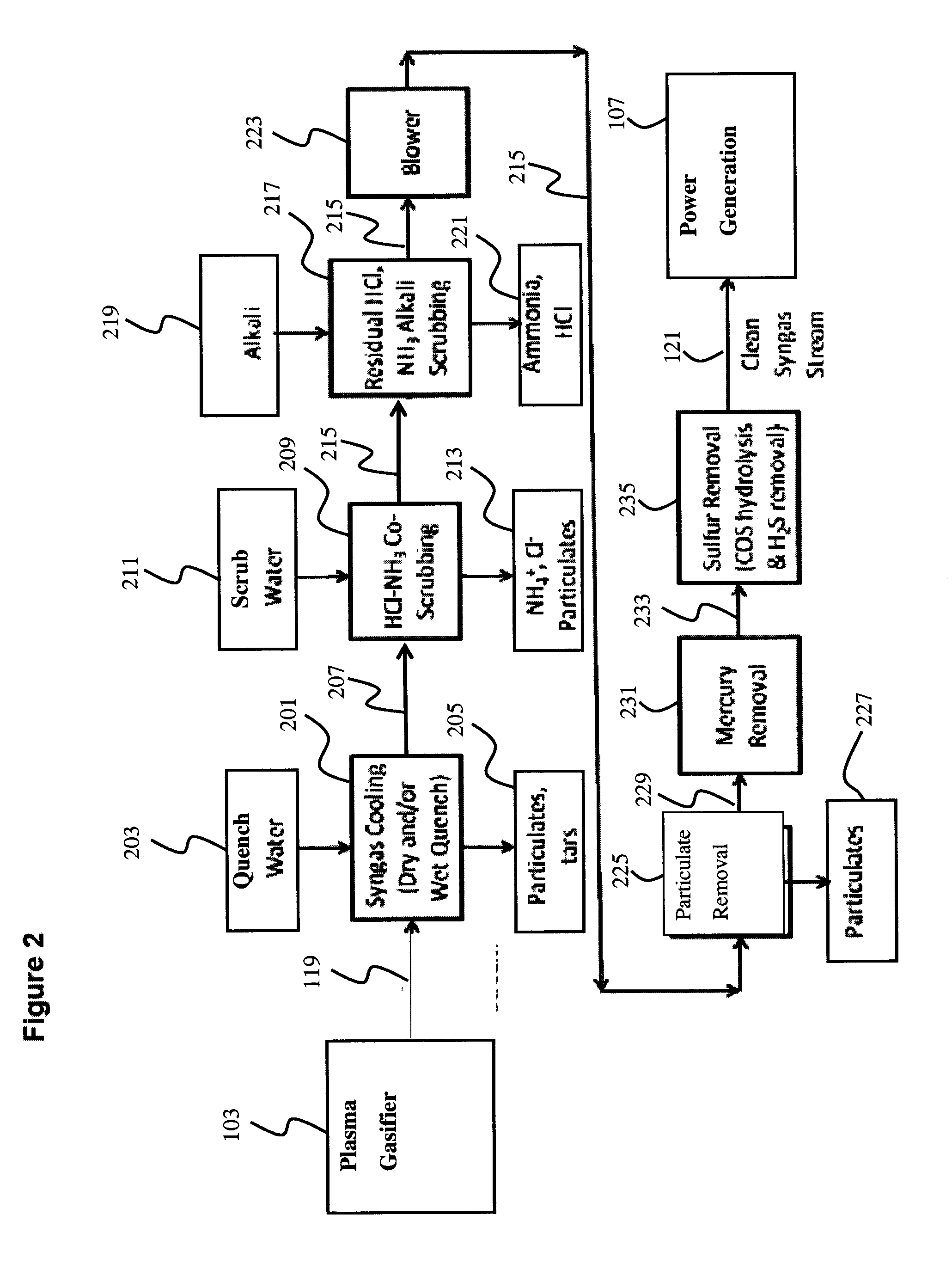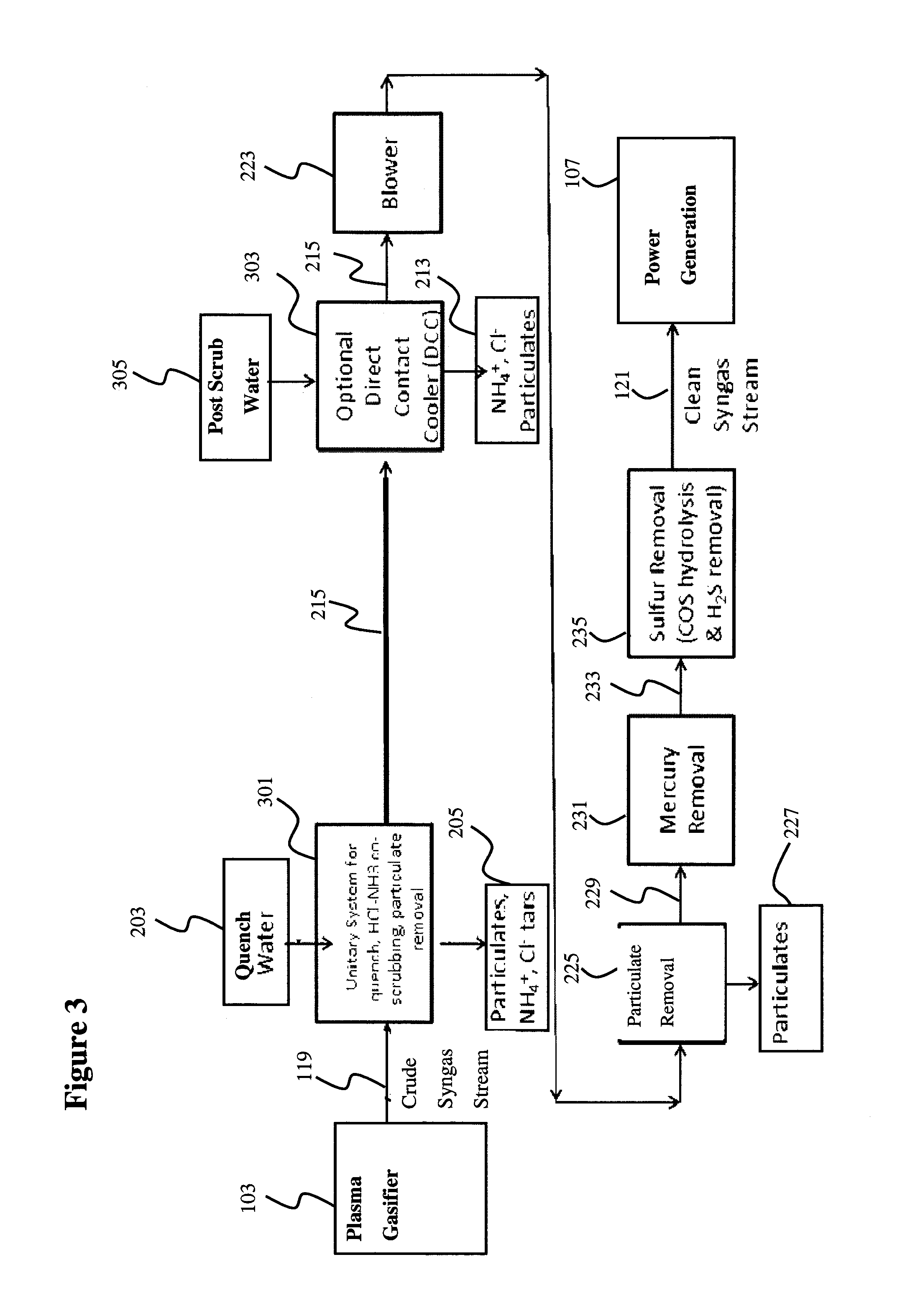Process and System for Syngas Treatment
a technology of process and system, applied in the direction of combustible gas production, combustible gas purification/modification, energy input, etc., can solve the problems of inability to shut down the cooling system of a 24/7 power generation facility, inability to effectively manage waste, and difficulty in cleaning up this widely varying crude syngas stream
- Summary
- Abstract
- Description
- Claims
- Application Information
AI Technical Summary
Benefits of technology
Problems solved by technology
Method used
Image
Examples
example 1
[0062]A crude syngas stream having 40,000 mg / Nm3 of particulates at a temperature of 1800° F. (982° C.) and a pressure of 0 psig is input at 65,000 Nm3 / hr into a syngas clean-up train. The crude syngas stream is fed to a dual Venturi scrubber where the gas is cooled with 290-445 m3 / hr of water, to between 150-200° F. (66-93° C.). Simultaneously a significant portion of the particulates, NH3 and HCl is removed. Tar removal is enhanced by using a large quantity of water at a fast quenching rate in the dual Venturi scrubber.
[0063]Particulate removal in the dual Venturi scrubber could be between 50-90% depending on the particle size distribution. In this example, particulate concentration of the quenched syngas stream is about 10,000 mg / Nm3. The gas passes through a direct contact cooler where the gas is further cooled to about 110° F. (43° C.), particulates are removed and HCl and NH3 are further removed. 90-99% of the input 3000 ppm NH3 and 95-99% of the input 3000 ppm HCl are removed...
example 2
[0064]A crude syngas stream having 40,000 mg / Nm3 of particulates at a temperature of 1800° F. (982° C.) and a pressure of 0 psig is input at 65,000 Nm3 / hr into a syngas clean-up train. The crude syngas is fed to a dual Venturi scrubber where the gas is cooled with 290-445 m3 / hr of water, to between 150-200° F. (66-93° C.). Simultaneously a significant portion of the particulates, NH3 and HCl is removed. Tar removal is enhanced by using a large quantity of water at a fast quenching rate in the Venturi.
[0065]Particulate removal in the dual Venturi could be between 50-90% depending the particle size distribution. In this example, particulate concentration of the quenched syngas stream is about 10,000 mg / Nm3. The gas passes through a direct contact cooler where the gas is further cooled to about 110° F. (43° C.), particulates are removed and HCl and NH3 are further removed. 90% of the input 1000 ppm NH3 and 95-99% of the input 3000 ppm HCl are removed by passing through the dual venturi...
example 3
[0068]A crude syngas stream having 25,000 mg / Nm3 of particulates at a temperature of 1800° F. (982° C.) and a pressure of 0 psig is input at 65,000 Nm3 / hr into a syngas clean-up train. The crude syngas stream is fed to a dual Venturi scrubber where the gas is cooled with 290-445 m3 / hr of water, to between 150-200° F. (66-93° C.). Simultaneously a significant portion of the particulates, NH3 and HCl is removed. Tar removal is enhanced by using a large quantity of water at a fast quenching rate in the dual Venturi scrubber.
[0069]Particulate removal in the dual Venturi scrubber could be between 50-90% depending on the particle size distribution. In this example, particulate concentration of the quenched syngas stream is about 2,000 mg / Nm3. The gas passes through a direct contact cooler where the gas is further cooled to about 110° F. (43° C.), particulates are removed and HCl and NH3 are further removed. 90-99% of the input 3000 ppm NH3 and 95-99% of the input 3000 ppm HCl are removed ...
PUM
| Property | Measurement | Unit |
|---|---|---|
| temperature | aaaaa | aaaaa |
| temperature | aaaaa | aaaaa |
| temperature | aaaaa | aaaaa |
Abstract
Description
Claims
Application Information
 Login to View More
Login to View More - R&D
- Intellectual Property
- Life Sciences
- Materials
- Tech Scout
- Unparalleled Data Quality
- Higher Quality Content
- 60% Fewer Hallucinations
Browse by: Latest US Patents, China's latest patents, Technical Efficacy Thesaurus, Application Domain, Technology Topic, Popular Technical Reports.
© 2025 PatSnap. All rights reserved.Legal|Privacy policy|Modern Slavery Act Transparency Statement|Sitemap|About US| Contact US: help@patsnap.com



